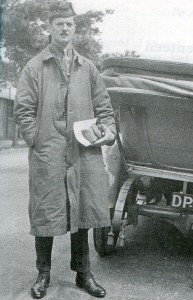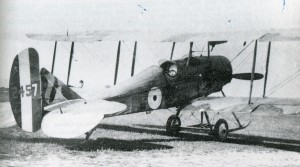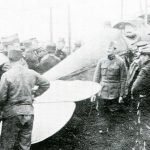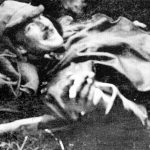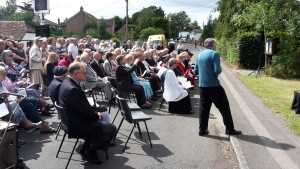“For most conspicuous bravery and devotion to duty on 31st July 1915. When on a flying reconnaissance over Ostend-Bruges-Ghent he was severely wounded (his right thigh being broken), which caused momentary unconsciousness, but by a great effort he recovered partial control after his machine had dropped nearly 3,000 feet, and notwithstanding his collapsed state succeeded, although continually fired at, in completing his course, and brought the aeroplane into our lines – half an hour after he had been wounded. The difficulties experienced by this Officer in saving his machine, and the life of his observer, cannot be readily expressed, but as the control wheel and throttle control were smashed, and also one of the undercarriage struts, it would seem incredible that he could have accomplished his task.”
Third Supplement to The London Gazette of 20 August 1915. 23 August 1915, Numb. 29272, pp. 8373-74
|
|
Aidan Liddell obtained his Royal Aero CLub Ticket (No. 781) in the spring of 1914 flying the Boxkite with the Vickers School at Brooklands, Surrey.On 30th August 1914, on the outbreak of war, he accompanied the 2nd Bn, the Argyll and Sutherland Highlanders, to the front in France with the rank of Captain and was placed in command of the machine gun section of the Battalion.For his service as commander of the Battalion machine gun section he was mentioned in despatches, and received the award of the Military Cross on 14th January 1915. He was himself wounded and invalided home. Once he recovered he was deemed unfit to go back to the trenches but as a qualified pilot, cleared to join the RFC. He left for France to join No 7 Squadron on 24th July 1915 and armed with the pilot’s notes appears to have taught himself to fly the RE5 in a couple of days. His first operational reconnaissance lasted 3 hours 50 minutes which is an unbelievably long time in an aircraft with a top speed of 55 mph and an endurance of ~4 hours. He was engaged from the air and the ground and brought the aircraft with 11 shrapnel holes and and a broken bracing wire. His second sortie was on 31st July and he was once again engaged by a hostile aircraft (HA). The Report by his squadron commander captures the essence of the Capt Liddell and his generation |
|
|
“In forwarding the attached report by 2/Lt Peck on an encounter with a hostile aeroplane (HA) I should like to call attention to the following points, as, in my opinion, it was a remarkably good piece of work by both pilot and observer in bringing their machine safely back. Captain Liddell is a comparatively young pilot and was only on his second reconnaissance. He has had one weeks experience of flying RE5 machines which undoubtedly require more judgement than most to land. In spite of his leg being broken very badly, with apparently 4 inches of bone shot away he flew his machine back over the lines at a height of 2,800 feet. An experienced pilot would have difficulty in flying and landing the machine under the circumstances in which he was placed; with one hand he worked the wheel control which was broken in half by bullets and with the other he worked the rudder. His throttle was shot away but he rightly drove the machine down with the engine on to ensure of hitting the aerodrome and then switched off.Whilst over the lines he was heavily fired on and was flying for over half an hour from the time he was wounded until he landed.His observer, 2/Lt Peck who has had several encounters in the air previously and was evidently of considerable assistance to the pilot. He was not strapped in but though everything else loose fell out of the machine he managed to retain his gun whilst holding himself in. I should add that after a perfect landing Captain Liddell sat for half an hour in his machine to await the arrival of a doctor as he considered his leg would still be further damaged if inexperienced hands lifted him out of the machine. He then put a splint on his leg and himself applied a tourniquet to stop the bleeding. Sadly, Capt Liddell succumbed to his wounds a month later but for his heroic efforts was awarded the Victoria Cross. He is buried unusually in England the Roman Catholic Cemetery in Basingstoke close to his home in Sherfield on Loddon.His award was commemorated on the 100th anniversary by a message dropped from a WW1 AHT BE2 to his old home which is now Sherfield School and subsequently by current members of 7 Squadron with an honour guard and a Chinook flypast at Sherfield when a plaque was erected near the cenotaph. |

